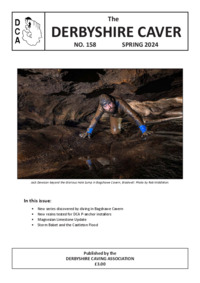NigR said:
Pitlamp said:
There is no substitute for a good wetsuit for avoidance of hypothermia on very wet caving trips; under/oversuit combinations are not as effective in these circumstances.
I would like to endorse this comment. Far too many cavers these days insist on wearing 'dry' gear on trips where a wetsuit would be a much more sensible option. Sooner or later someone will pay the ultimate price as a result.
I suspect this really belongs in a "furry vs neoprene" topic although if you say that then the last couple of pages belong in a "are weather forecasts worth a damn" thread but all the same...
...one of my main problems when caving (kit wise anyway!) is that I overheat very easily. As a result my usual attire is one of Mr Warmbac's very thin expedition fleeces with an oversuit. This is normally pretty close to perfect even when getting wet,
so long as I keep moving. It is always a problem that if I stop too long I start to get cold but I suspect the same would apply if I was wearing neoprene and sweating my bollox off. It is always a real compromise and I have been aware for a long time that I should really be carrying a large carrier bag to climb into should I have to sit anything out for a long time - I guess this might actually give me enough of a kick up the arse to do something about it.
Meanwhile I bought a neofleece. This was meant to be for a DYO green canal trip where neoprene is alledged to be compulsory. Alas I never got to try it due to alien intervention or somesuch but I must admit I wasn't looking forward to the long crawl in such a hot suit. My first use of the neo in anger was down Swillies in quite high water conditions. It was good fun and yes I was nice and warm, although I did wonder whether I would have been better off in a fleece and oversuit because then
I would have worked harder at staying dry! I wondered if the neo made me complacent and whether after a certain length of time I would suddenly feel very cold.
A quick aside - my first ever experience of neoprene was a surfing wetsuit worn under a boiler suit and I was fine in the water but as soon as I got out I was near hypothermic - I have also gotten immersed neck deep for up to half an hour in a pile undersuit and boilersuit combo and after the first 5 or so minutes been quite ok, then nice and toasty warm once out the water, although it must be stressed that we kept moving and didn't stop and sit down.
I'm not entirely sure what I am trying to suggest by all of this, except perhaps my own inexperience and lack of answers in the what to wear debate.
I do know that down Swillies that day was a really good reminder about respect one should have for water - how what is normally a piss easy 3 foot climb up can turn into a prize sod with only a bit more water. I suspect, and plan to base my survival on (until corrected of course) on the assumption that hanging around in fast flowing flood waters is gonna kill me pretty quickly
whatever I'm wearing!! :blink:



